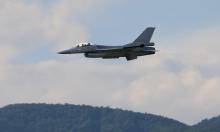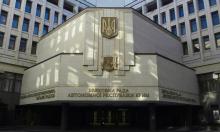South Pacific tsunami raises fresh questions about warning systems
A tsunami early warning system would have been of little use for the thousands of people in the Solomon Islands hit by deadly waves, since they had only minutes to escape, an American earthquake expert said Tuesday.
An Australian official meanwhile acknowledged that a tsunami warning issued for the Queensland coast was undermined by widespread panic and a lack of clear information about whether the waves were actually headed their way.
"We got the emergency people together and we were trying to ascertain, 'Is there really a tsunami coming, if so how big is it, and how far are we going to need to encourage people to leave the coastline?"' Queensland Premier Peter Beattie told the Seven Network on Tuesday.
"We couldn't get that information. ... We didn't know the extent of the problem. We were shooting blind," Beattie said.
Critics said Monday's tsunami, which killed at least 28 people, exposed the limitations of a warning system that supporters have championed as the best means of avoiding a repeat of the 2004 Indian Ocean disaster.
That disaster, which left some 230,000 people dead or missing in a dozen countries, prompted the United Nations and six governmental donors, including the United States, to create a US$130 million (EUR97 million) Indian Ocean Tsunami Warning and Mitigation System, which is expected to be operational at the end of 2008.
Indonesia, which was hit hardest by the 2004 disaster, is in the process of installing dozens of tidal gauges and deep-ocean tsunami monitoring buoys to detect tsunami waves as well as more than 150 seismometers to detect earthquakes.
The United Nation's Michael Rottmann, special coordinator for the tsunami early warning system in Indonesia, told The Associated Press on Tuesday that he is confident the system will alert most people within 10 minutes of an undersea temblor.
"I think a lot of lives can be saved if you have a warning in less than 10 minutes," Rottmann said, noting that it took 15 minutes for waves from the 2004 quake to reach the coastline of Sumatra. "If you have five minutes and you have a reliable warning, you can get very far. You could go up into a hill or get away from the beach."
Yet critics of the early warning system are not confident.
U.S. earthquake expert Kerry Sieh, who has studied the 2004 disaster, said coastal communities near a quake epicenter would be better off putting their resources into disaster response education and efforts to permanently relocate vulnerable communities to higher ground rather than counting on an alert system to save them.
"When you have a tsunami coming in so quickly after an earthquake, it doesn't do much good to have an early warning system," he said. "It could still be valuable for people who are at greater distances. That is the main reason for a warning system in the Pacific."
Sieh said the South Pacific tsunami was a perfect example of the "limits" of such a system, since witnesses reported that a wall of water 5 meters (16 feet) high plowed into the Solomons' shores within about five minutes of the quake.
The tsunami was triggered by a magnitude-8.0 quake that struck shortly after 7:39 a.m. Monday 10 kilometers (six miles) beneath the sea floor, about 345 kilometers (215 miles) northwest of the Solomons' capital, Honiara, the U.S. Geological Survey said.
The quake set off tsunami alarms from Tokyo to Hawaii. It also prompted the closure of beaches, schools and business on Australia's east, more than 2,000 kilometers (1,250 miles) from the epicenter.
The disaster left thousands homeless.
Australian federal government officials dismissed suggestions that they overreacted to the tsunami threat, saying it was an "appropriate reaction" to the quake that resulted in a tsunami 20 to 30 centimeters high off its east coast.
"In certain areas ... one may have had a larger impact," said Ray Canterford, who is leading the implementation of the country's 69 million Australian dollars (US$56.2 million; EUR42 million) alert system for the Australian Bureau of Meteorology. It will be completed in 2009.
"I believe it was a sort of marginal event but it was better to act a little more carefully than to ignore the threat," he said.
Beattie, however, called on the federal government to speed up the introduction of early warning systems in the Coral Sea to provide vital information that would aid evacuation.
"This is not a game. The truth is, if yesterday there had been a (larger) tsunami, we would have lost lives," Beattie said Tuesday.
Federal lawmaker Bob Baldwin, who is responsible for overseeing the rollout of Australia's tsunami warning system, accused Beattie of failing to act decisively.
"He almost plunged the state into panic by the fact that he didn't seem to know what he was doing," Baldwin told ABC radio.
Subscribe to Pravda.Ru Telegram channel, Facebook, RSS!




